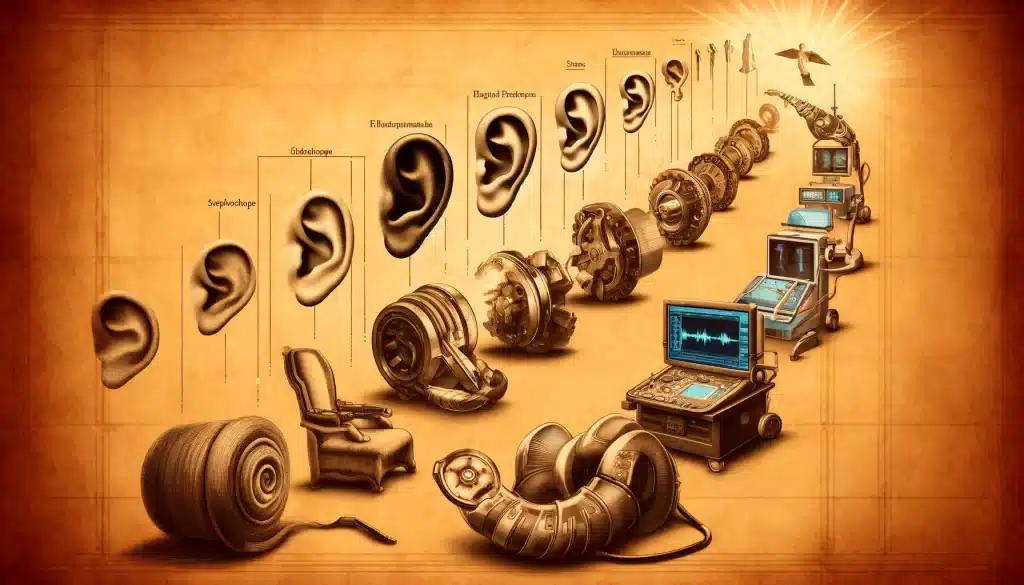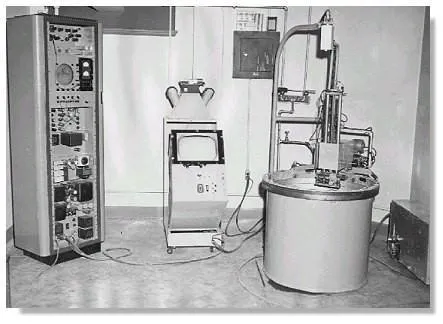Sound plays a fundamental role in our communication, entertainment, and understanding of the world. At its core, sound is a vibration that travels through the air or other mediums, reaching our ears and allowing us to hear. But there's more to sound than meets the ear.
Sound is not just an aspect of our daily lives; it holds a special place in medicine, offering innovative ways to diagnose, treat, and understand the human body. While most people are familiar with the use of sound waves in ultrasound imaging, the application of sound in medicine extends far beyond, touching on areas as diverse as therapy and surgical treatment.
A study published in the Journal of Acoustic Society of America highlights the intricacies of how sound waves interact with different tissues in the body, providing essential insights for medical diagnostics and treatments. Another research article, found in The Lancet, discusses the therapeutic use of sound frequencies to promote healing and reduce pain, showcasing the broad and impactful uses of sound in healthcare settings.
This article aims to shed light on how sound works and its significant contributions to medicine. By understanding the basic principles of sound and its medical applications, we can appreciate the incredible ways in which this invisible force shapes our health and well-being. Join us as we explore the fascinating world of sound, from its fundamental physics to its critical role in modern medicine.

The Science of Sound
At its simplest, sound is energy made by vibrations. These vibrations create sound waves that move through mediums such as air, water, and solids. Think of when you pluck a guitar string; the vibrating string causes air particles around it to move, creating sound waves that eventually reach your ears, allowing you to hear the music.
How Sound Travels
The journey of sound begins with a vibration. Once generated, this vibration pushes and pulls on air molecules, creating a wave of pressure that propels through the air. The speed at which this wave travels, known as the speed of sound, varies depending on the medium. For example, sound travels faster in water than in air and even faster in solids like steel or wood. This variation plays a critical role in how we use sound in medical diagnostics, especially in technologies like ultrasound.
Frequency and Amplitude
Two key characteristics define any sound wave: frequency and amplitude. Frequency, measured in Hertz (Hz), refers to the number of wave cycles that pass a point in one second. It's what determines the pitch of the sound, with higher frequencies producing a higher pitch. Amplitude, on the other hand, measures the strength or loudness of the sound, influenced by the energy of the wave.
Perception of Sound
Our ears are finely tuned to detect these sound waves, translating them into signals our brain can understand. The outer ear captures sound waves, funneling them to the eardrum. These vibrations then travel through the middle ear to the inner ear, where they are converted into electrical signals for the brain. This process allows us to not only hear but also interpret sounds, understanding speech, enjoying music, or sensing danger.
A study published in the British Journal of Audiology examines how different frequencies are perceived by the human ear, providing insight into the complexities of hearing and the potential for hearing loss treatment. Furthermore, research in the American Journal of Otolaryngology delves into how sound perception changes with age, highlighting the importance of sound in our communication and overall quality of life.
Understanding the science of sound lays the foundation for exploring its application in medicine. By grasping how sound waves are created, travel, and are perceived, we can begin to appreciate the innovative ways in which sound is utilized in healthcare, from diagnostics to treatment, offering a glimpse into the profound impact of sound on medical science.
Sound in the Natural World
The natural world teems with examples of how sound functions as a critical tool for communication, navigation, and survival among various species. From the deep calls of whales traversing oceanic expanses to the echolocation abilities of bats in pitch-black caves, sound serves multifaceted roles in the animal kingdom.
Animal Communication
Many animals rely on sound to communicate with each other. The songs of birds at dawn, for instance, are not just pleasant for us to hear but are vital for their mating rituals and territory defense. Whales use low-frequency sounds to communicate over vast distances in the ocean, where light penetration is minimal. These sounds can travel for thousands of miles, showcasing the incredible efficiency of sound transmission in water compared to air.
Echolocation: Nature's Sonar
One of the most fascinating uses of sound in the natural world is echolocation, employed by bats, dolphins, and certain species of birds. By emitting high-frequency sounds that bounce off objects and return as echoes, these animals can navigate and hunt in complete darkness. This ability illustrates sound's potential for precise spatial mapping, a principle that has inspired technologies like ultrasound imaging in medicine.
A study published in the Journal of Experimental Biology delves into the mechanics of bat echolocation, revealing how variations in sound frequency and timing are used to detect prey and avoid obstacles with remarkable accuracy. Similarly, research in Marine Biology explores how dolphins adjust their echolocation clicks based on the distance and size of objects, demonstrating the sophisticated control they have over sound production.
The Role of Sound in Plant Life
While less obvious, sound also influences the plant world. Research published in Oecologia has found that certain plants can detect the vibrations caused by insect activity, prompting them to activate chemical defenses. This emerging field of study opens up new perspectives on the interconnectedness of sound, animal behavior, and plant survival strategies.
Understanding how sound operates in the natural world not only enriches our appreciation of its complexity and beauty but also informs its applications in technology and medicine. By studying these natural phenomena, scientists and engineers can develop new ways to harness sound for human benefit, from improving diagnostic tools to designing more effective communication systems.

The Evolution of Sound in Medicine
The journey of sound in medicine is a testament to human ingenuity, tracing back to ancient times when the simple act of listening to the body provided the first insights into health and disease. Over centuries, this intuitive use of sound has evolved into sophisticated technologies that have revolutionized the way we diagnose, treat, and understand the human body.
From Ear to Technology
The earliest medical practitioners relied on auscultation, directly listening to the sounds of the body, such as the heartbeat or lung sounds, to assess health. This practice was revolutionized in the early 19th century with the invention of the stethoscope by René Laennec, enhancing the clarity and range of internal body sounds that could be heard. Today, the stethoscope remains a symbol of the medical profession, though the principles of using sound for diagnosis have expanded far beyond.
Ultrasound: A New Vision
The development of ultrasound technology marked a significant milestone in medical history. Utilizing high-frequency sound waves to create images of the inside of the body, ultrasound provided a non-invasive window into the human anatomy, transforming prenatal care and the diagnosis of internal conditions. This technology operates on the principle that sound waves can be reflected, absorbed, or transmitted differently by various types of tissues, allowing for detailed imaging without the use of ionizing radiation.
Research in the Journal of Clinical Ultrasound outlines the advancements in ultrasound technology, highlighting its critical role in modern diagnostics, from assessing heart conditions to guiding needle placements in biopsies. Another study published in Ultrasound in Medicine & Biology discusses the potential of ultrasound in therapeutic applications, such as targeted drug delivery and non-invasive surgery, showcasing the expanding capabilities of sound in treatment.
Sound Beyond Diagnosis
In addition to diagnostic imaging, sound has found therapeutic applications in medicine. For instance, the use of low-intensity pulsed ultrasound (LIPUS) has been explored for enhancing bone healing. According to a study in The Journal of Bone and Joint Surgery, LIPUS can stimulate bone formation and healing, offering a promising treatment for fractures and bone defects.
Similarly, focused ultrasound surgery (FUS) represents a cutting-edge use of sound waves to treat tumors and other pathologies non-invasively. By concentrating sound energy to a precise point within the body, FUS can destroy targeted tissues without harming surrounding areas. A review in Neurosurgery details the use of FUS in treating brain disorders, underlining the vast potential of sound in medical interventions.
As we continue to explore and expand the capabilities of sound in medicine, its evolution stands as a powerful reminder of our enduring quest to merge natural phenomena with technological innovation for healing purposes. The journey of sound from a simple diagnostic tool to a cornerstone of modern medicine illustrates not only the versatility of sound but also our deepening understanding of its potential to improve human health.
Innovative Uses of Sound in Medicine
As we delve into the modern era, the application of sound in medicine continues to expand, driven by relentless innovation and research. Beyond the familiar territories of diagnosis and treatment, sound is paving new paths in medical technology, offering solutions once thought to be the realm of science fiction.
High-Intensity Focused Ultrasound (HIFU)
High-Intensity Focused Ultrasound (HIFU) is a groundbreaking technique that uses focused sound waves to target and destroy diseased tissues, such as tumors, without the need for invasive surgery. This approach has shown promising results in treating various conditions, including prostate cancer, uterine fibroids, and certain brain diseases. A study published in The Lancet Oncology highlights the precision and safety of HIFU in ablating cancerous tissues, underscoring its potential as a non-invasive alternative to traditional surgical procedures.
Sound for Drug Delivery
The concept of using sound waves to enhance drug delivery is another area of innovative research. By employing ultrasound, scientists aim to improve the precision and efficiency of drug delivery, particularly in targeting hard-to-reach areas within the body or crossing biological barriers, such as the blood-brain barrier. Research published in Advanced Drug Delivery Reviews discusses how ultrasound can be used to trigger the release of drugs from nanoparticles directly at the site of disease, minimizing side effects and maximizing therapeutic effects.
Bone Healing and Regeneration
Sound waves are also being harnessed to promote bone healing and regeneration. Through the application of low-intensity pulsed ultrasound (LIPUS), researchers have found that sound waves can stimulate bone formation and accelerate the healing process. A study in The Journal of Bone and Joint Surgery presents evidence that LIPUS is effective in treating bone fractures and enhancing bone graft integration, offering a non-invasive option for patients with bone injuries.
Enhancing Neurological Functions
The therapeutic use of sound extends to the realm of neurology, where research is exploring how auditory stimulation can enhance cognitive and motor functions in patients with neurological disorders. Sound therapy, involving the use of specific sound frequencies and rhythms, has been shown to improve symptoms in patients with conditions such as Parkinson's disease, stroke, and traumatic brain injury. A publication in Neurorehabilitation and Neural Repair reveals how tailored sound stimulation protocols can facilitate neuroplasticity, the brain's ability to reorganize and adapt, highlighting the potential for sound-based therapies in neurorehabilitation.
As these innovative applications illustrate, sound is not merely a tool for diagnosis or a medium for therapy; it is a versatile and powerful technology that holds the promise to revolutionize medicine. By pushing the boundaries of how sound is used in healthcare, researchers and clinicians are unlocking new possibilities for treatment and healing, reaffirming the indispensable role of sound in advancing medical science and improving patient care.
The exploration of sound in medicine reveals a landscape where innovation and tradition converge, highlighting sound's intrinsic value not just as a tool for diagnosis but as a catalyst for therapeutic breakthroughs. From the rudimentary practices of listening to the body to the sophisticated technologies of ultrasound and beyond, sound has proven to be an indispensable ally in the quest to understand and heal the human body.
The journey from the basic principles of sound waves to their applications in diagnosing and treating diseases showcases a remarkable evolution. High-Intensity Focused Ultrasound (HIFU) for non-invasive surgery, ultrasound-enhanced drug delivery, and sound therapy for bone healing and neurological rehabilitation represent just the tip of the iceberg. As research continues to unveil new possibilities, the potential for sound in medicine appears boundless.
Sound, in its essence, is a bridge between the ancient and the modern, the simple and the complex. Its role in medicine underscores a profound truth: that even the most ordinary elements of our world can be transformed into extraordinary tools for healing. As we look to the future, sound promises to remain at the forefront of medical innovation, offering new hope and possibilities for patient care and treatment.
This journey through the science and application of sound in medicine underscores not only the versatility of sound but also our deepening understanding of its potential to improve human health. It's a testament to the creativity and persistence of the human spirit in leveraging natural phenomena for the greater good.









